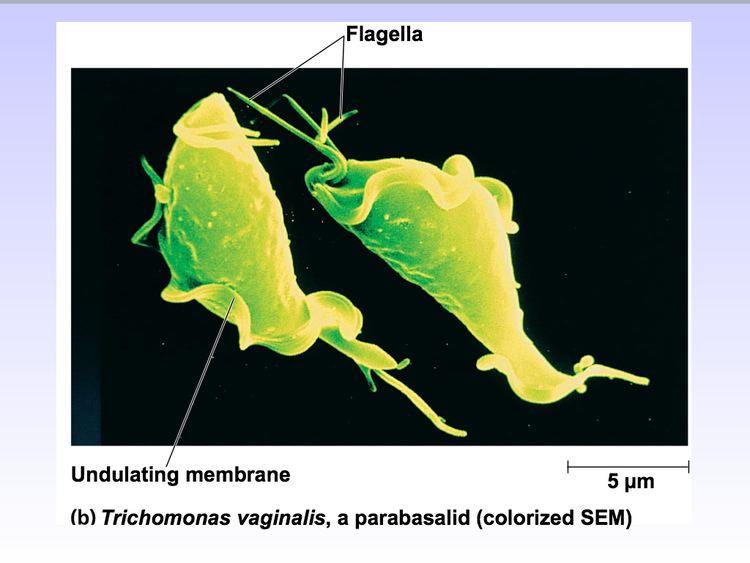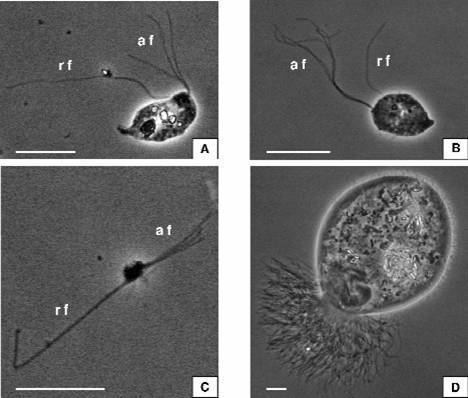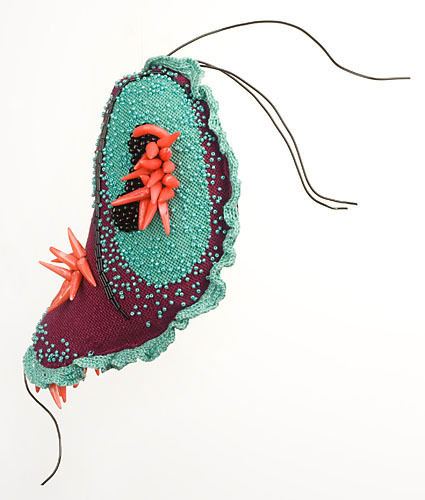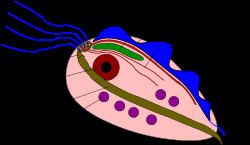Domain Eukaryota Rank Class | Scientific name Parabasalia Higher classification Metamonad | |
 | ||
Lower classifications | ||
The parabasalids are a group of flagellated protists within the supergroup Excavata. Most of these organisms form a symbiotic relationship in animals; these include a variety of forms found in the intestines of termites and cockroaches, many of which have symbiotic bacteria that help them digest cellulose in woody plants. Other species within this supergroup are known parasites, and include human pathogens.
Contents

Parabasalid | Wikipedia audio article
Characteristics

The flagella are arranged in one or more clusters near the anterior of the cell. Their basal bodies are linked to parabasal fibers that attach to prominent Golgi complexes, distinctive to the group. Usually they also give rise to a sheet of cross-like microtubules that runs down the center of the cell and in some cases projects past the end. This is called the axostyle, but is different in structure from the axostyles of oxymonads.

Parabasalids are anaerobic, and lack mitochondria, but this is now known to be a result of secondary loss, and they contain small hydrogenosomes which apparently developed from reduced mitochondria. Similar relics have been found in other amitochondriate flagellates, and the parabasalids are probably related to them, forming a group called the metamonads. They lack the feeding grooves found in most others, but this is probably a secondary loss as well.
Classification
The parabasalids are currently divided into 10 orders.

